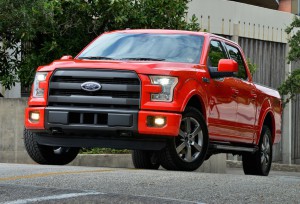With new vehicle sales setting a blistering pace during December at a seasonally adjusted annual rate or SAAR of 17.3 million units, and the popularity of trucks and utility vehicles on the rise, the average fuel economy of new vehicles sold in the U.S. slipped last month, according to researchers at the University of Michigan Transportation Research Institute.
The university’s numbers showed that the mileage or window-sticker values of cars, light trucks, vans and SUVs purchased in December was 25.1 mpg, down from 25.3 mpg in each of the previous three months and down from an all-time high 25.8 mpg last August. Overall, vehicle fuel economy is up 5 mpg from October 2007, the first full month of monitoring by UMTRI researchers Michael Sivak and Brandon Schoettle.
“The recent reductions in gas mileage likely reflect the large and continuing decreases in the price of gasoline,” Sivak said.
Gasoline prices have dropped 55% since the September, which as helped by trucks and utility vehicles more attractive. The popularity of trucks and SUVs are expected to prevail again in 2015 when sales of light vehicles are expected to climb for the sixth straight year, reaching pre-recession levels.
Analysts are uncertain when the price of fuel might level off and begin to rise again as the collapse in oil prices has triggered a scramble for market share among and uncovered a substantial amount of debt in the energy sector that was incurred while prices boomed, following the recession.
(Consumers win as falling oil prices rattle market. For more, Click Here.)
In addition to average fuel economy, Sivak and Schoettle issued a monthly update of their national Eco-Driving Index, which estimates the average monthly emissions generated by an individual U.S. driver. The EDI takes into account both the fuel used per distance driven and the amount of driving – the latter relying on data that are published with a two-month lag.
(Click Here for details about GM’s Skip Fire System that can slash fuel consumption.)
After setting a record-low 0.76 in August, the EDI regressed for a second straight month to 0.79 in October indicating that new vehicles left behind more pollution than vehicles purchased in the early months of 2014.
(To see why Cadillac is cutting the price on the CTS, Click Here.)
The index currently shows emissions of greenhouse gases per driver of newly purchased vehicles are now down 21%, overall, since October 2007.


This cartoon was relevant in 1986, just as it is now. Enjoy the gas prices – they won’t last as long as you think they will. The fundamentals have not changed…
http://www.democraticunderground.com/discuss/duboard.php?az=view_all&address=105×5049238